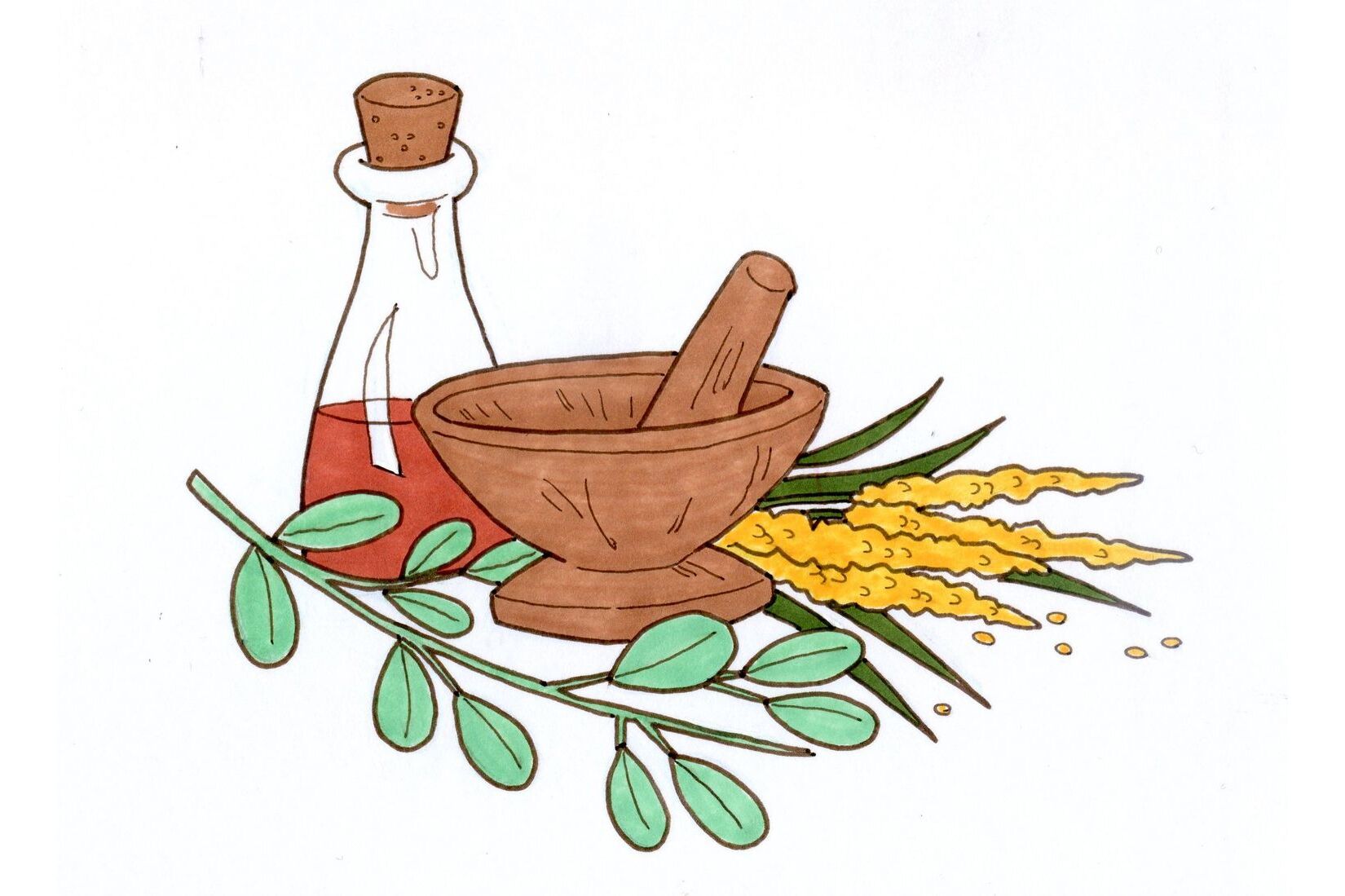
Ancient Aztec medicine was a fascinating blend of herbal remedies, spiritual rituals, and surgical techniques. The Aztecs, who thrived in central Mexico from the 14th to the 16th century, developed a sophisticated medical system that combined practical knowledge with deep spiritual beliefs. Healers, known as ticitl, used a variety of plants, minerals, and animal products to treat ailments ranging from headaches to broken bones. They also believed that many illnesses had supernatural causes, requiring rituals and offerings to appease the gods. Aztec medicine wasn't just about curing diseases; it was about maintaining balance within the body and with the universe. This holistic approach ensured that physical, mental, and spiritual health were all addressed. Curious about how these ancient practices influenced modern medicine? Let's dive into 45 intriguing facts about Aztec healing methods.
Key Takeaways:
- Aztec medicine combined spiritual beliefs and natural remedies, using over 300 plants for healing. Their surgical skills, use of animals, and holistic approach continue to influence modern medicine.
- The Aztecs believed in the power of rituals, diet, and water for healing. Their legacy lives on through herbal medicine, holistic healing, and the preservation of their ancient knowledge.
The Foundations of Aztec Medicine
Aztec medicine was a blend of spiritual beliefs and practical knowledge. They relied on a variety of natural remedies and rituals to treat ailments.
- Aztecs believed illness was caused by imbalances in the body or displeasure of the gods.
- They used over 300 different plants for medicinal purposes.
- Cacao was used to treat fatigue and stimulate the nervous system.
- Tobacco was considered a sacred plant and used in rituals to ward off evil spirits.
- Aloe vera was applied to wounds and burns for its soothing properties.
Herbal Remedies and Treatments
Herbs played a significant role in Aztec medicine. They had extensive knowledge of plants and their healing properties.
- Sage was used to treat respiratory issues and digestive problems.
- Marigold flowers were used to reduce inflammation and treat skin conditions.
- The bark of the willow tree was used as a pain reliever, similar to modern aspirin.
- Vanilla, native to Mexico, was used to treat stomach ailments and as an aphrodisiac.
- The Aztecs used chili peppers to stimulate circulation and relieve muscle pain.
Surgical Practices and Techniques
Despite limited technology, the Aztecs performed various surgical procedures with surprising skill.
- Trepanation, or drilling holes in the skull, was performed to relieve pressure or treat head injuries.
- They used obsidian blades, which were sharper than modern steel scalpels, for surgeries.
- Bone setting was a common practice, and they used splints made from wood or reeds.
- Aztec surgeons could perform amputations and cauterize wounds to prevent infection.
- They used maggots to clean wounds by eating dead tissue, a practice still used in modern medicine.
Spiritual Healing and Rituals
Spirituality was deeply intertwined with Aztec medicine. They believed in the power of rituals and offerings to heal the sick.
- Shamans, known as ticitl, acted as both doctors and spiritual guides.
- Healing rituals often involved offerings to the gods, such as food, flowers, or incense.
- Temazcal, a type of sweat lodge, was used for purification and healing.
- Chanting and prayer were integral parts of the healing process.
- Aztecs believed dreams could reveal the cause of an illness and guide treatment.
Diet and Nutrition
The Aztecs understood the importance of a balanced diet for maintaining health. They incorporated various foods with medicinal properties into their meals.
- Maize, or corn, was a staple food and considered sacred.
- Amaranth, a grain high in protein, was used to boost energy and strength.
- Chia seeds were consumed for their nutritional value and to increase stamina.
- Avocado was believed to promote heart health and improve digestion.
- Tomatoes were used to treat digestive issues and improve overall health.
Animal-Based Remedies
Animals and their by-products were also used in Aztec medicine. They believed certain animals had healing properties.
- Honey was used as an antiseptic and to treat wounds.
- Deer antlers were ground into powder and used to treat kidney problems.
- Snake venom was used in small doses to treat various ailments.
- Armadillo shells were used in poultices to reduce swelling.
- Eagle feathers were used in rituals to promote healing and protection.
The Role of Water in Healing
Water was considered a powerful healing element in Aztec culture. They used it in various forms for medicinal purposes.
- Bathing in natural springs was believed to cleanse the body and spirit.
- Cold water was used to reduce fever and inflammation.
- Herbal infusions were often added to baths for their therapeutic effects.
- Drinking water from sacred springs was believed to have healing properties.
- Steam baths were used to treat respiratory issues and improve circulation.
Legacy and Influence
Aztec medicine has left a lasting impact on modern medical practices. Many of their remedies and techniques are still in use today.
- The use of herbal medicine has been passed down through generations in Mexico.
- Modern pharmaceuticals have been developed from plants used by the Aztecs.
- The concept of holistic healing, treating the mind, body, and spirit, is rooted in Aztec practices.
- Sweat lodges, similar to the temazcal, are used in various cultures for healing and purification.
- The use of maggots in wound care has been revived in modern medicine.
Preservation of Knowledge
Efforts have been made to preserve and study Aztec medical knowledge. Researchers continue to uncover the wisdom of this ancient civilization.
- Codices, ancient manuscripts, contain detailed information about Aztec medicine.
- Ethnobotanists study traditional plant use to discover new medicinal properties.
- Museums and cultural centers in Mexico preserve artifacts and educate the public about Aztec medicine.
- Indigenous healers continue to practice traditional medicine in rural areas of Mexico.
- Universities and research institutions collaborate with indigenous communities to document and preserve their medical knowledge.
Ancient Aztec Medicine: A Legacy of Knowledge
Ancient Aztec medicine wasn't just about herbs and rituals. It was a sophisticated system blending botanical knowledge, spiritual beliefs, and practical treatments. They used plants like cacao and chili peppers for healing, and their understanding of surgery and anatomy was impressive. The Aztecs believed in the balance of body and spirit, often using temazcals (sweat baths) for purification. Their medical practices influenced modern medicine, showing how ancient wisdom still holds value today. By studying their methods, we gain insight into holistic health approaches that combine physical and spiritual well-being. The Aztecs' contributions remind us that ancient civilizations had advanced knowledge that can still teach us a lot. Their legacy continues to inspire and inform contemporary medical practices, proving that sometimes, looking back can help us move forward.
Frequently Asked Questions
Was this page helpful?
Our commitment to delivering trustworthy and engaging content is at the heart of what we do. Each fact on our site is contributed by real users like you, bringing a wealth of diverse insights and information. To ensure the highest standards of accuracy and reliability, our dedicated editors meticulously review each submission. This process guarantees that the facts we share are not only fascinating but also credible. Trust in our commitment to quality and authenticity as you explore and learn with us.


